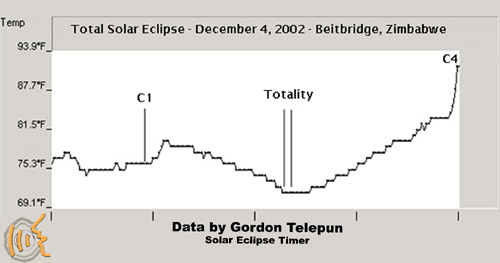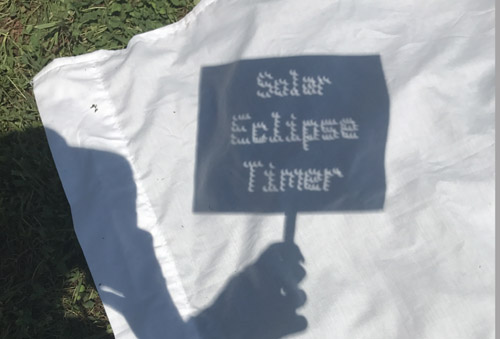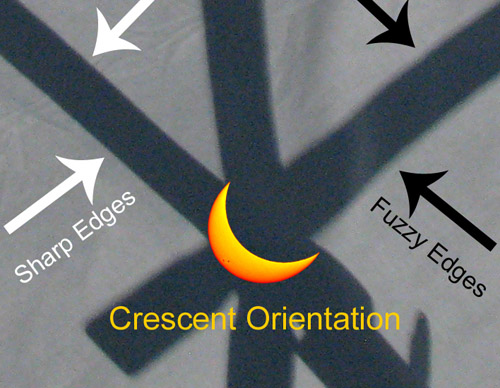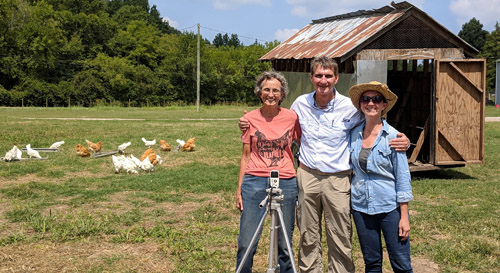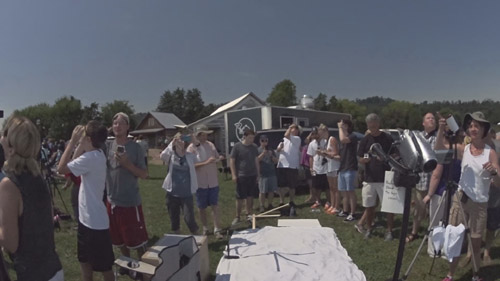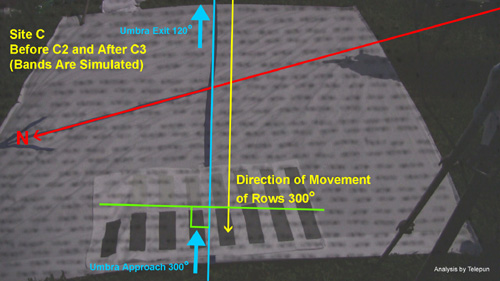The #1 App In 2017 For Timing The American Total Solar Eclipse!
Out of all of the eclipse experts out there, I just may be the eclipse expert that is the biggest advocate for teaching about the Partial Phase Phenomena. I have always had a great interest in the unusual things that can happen because the Sun is physically having its light blocked by the Moon. This is truly a special circumstance. This is nothing like a sunrise or sunset on the horizon. This is not like a big thick cloud passing in front of the Sun. This is a physical block of sunlight, where the portion that is blocked is complete and the blocking is slow and progressive. The physical block creates conditions that cannot be reproduced by any other mechanism on any other day. It blocks all of the wavelengths of the Sun's energy. And because the shape of the Sun changes into a crescent, the way light rays hit the Earth also changes. Then, as it is getting darker, our eye-brain system of dark adaptation is tested along with the shift in the ambient light color spectrum as the Earth is lit only from the limb of the Sun. It's completely amazing. I have YouTube videos that go into detail about these phenomena, but let's do a written overview here.
The app will remind you to observe for the interesting and fun Partial Phase Phenomena that occur between 1st Contact and 2nd Contact during a total solar eclipse. If you are observing a partial solar eclipse, the announcements are adjusted accordingly so they are appropriate based on the depth of the partial eclipse at your location. So during a partial eclipse, fewer announcements will play. Partial Phase Phenomena announcements are only played between C1 and C2. They are NOT played during C3 and C4 in reverse order.
During a total solar eclipse, you will be reminded to observe for changes ambient temperature, when to take pinhole projection images and when to observe the sharp and fuzzy shadow effect. You will also be reminded about changes in animal behavior and changes in ambient lighting. And right before and after totality, you will be told to look for shadow bands.
NOTE: There are four other useful announcements other than those regarding the partial phase phenomena. These are; 1. observing for the umbra approach. 2. observing for planets and stars. 3. observing the 360-degree horizon during max eclipse. 4. observing for the umbra exit.
Changes In Ambient Temperature
As the Moon moves in front of the Sun the radiant energy from the Sun is progressively blocked. From C1 to C2 the diminishing delivery of solar energy to the Earth is almost linear. The same is true for the recovery of solar energy from C3 to C4. Monitoring the ambient temperature is a fun and simple experiment to document this effect. The app will remind you a few times to see if you can observe this feeling of a drop in temperature. Watch a video about temperature changes here.
Pinhole Projection Images
There is a concept in photography called camera obscura. With this technique, an image is being projected onto a surface on the opposite side of a pinhole. The image is projected upside down and reversed left to right. It's fun to see this concept work during an eclipse when the crescent Sun can be projected onto the ground through anything that creates a pinhole. The crescents can be seen projected onto the ground through the natural pinholes between leaves in the trees. The crescents can be projected holes in kitchen utensils, or hats or anything else with small holes. You can punch holes in thin cardboard and project your name as crescents. Watch a video about this fun effect here.
Sharp and Fuzzy Shadows
An amazing thing happens to regular shadows after about 50% or greater coverage of the Sun's surface. Because the Sun is becoming a narrow crescent, the way its light rays hit the Earth is altered. When the Sun is a narrow crescent the light rays no longer hit the Earth with an infinite amount of angles. The light rays begin to be more directional or lined up. The way this affects shadows is as follows: objects that are "in-line" with the orientation of the crescent cast shadows that have sharp edges and objects that are perpendicular with the orientation of the crescent cast shadows that are fuzzy. It is wonderful to see this phenomena which can only be witnessed during a solar eclipse. Watch a video about this effect here.
Changes In Animal Behavior
Close to totality, it is becoming dark enough that animals can be fooled into thinking it is becoming nighttime and they will behave as such. The easiest one to experience, if you are in a natural environment, is hearing crickets beginning to make their nighttime sounds. It's amazing! Other behaviors include birds going to their perches to rest (roost), grazing animals ceasing to feed, bees returning to their hives, bats beginning to fly and songbirds stopping their singing. I have a video of the way chickens behaved during the last eclipse. I went to visit the farm and those chickens and the two ladies that own the farm, Annie Acres, Nashville, TN. I have the most interesting chicken behavior video on the internet and you can watch it here.
Changes In Ambient Lighting
Very close to totality, there is a distinct difference in the ambient lighting. In the final two minutes before totality, the changes become rapid. The most basic observation is that is it getting darker. However, it is a very interesting and unusual decrease in light. There is a subtle color change, which appears to be slightly gray, or silvery gray. It is due to the colors becoming less vivid. The reason you do not start to perceive the change in lighting until this point is because as the brightness has been slowly decreasing, your body has been compensating by your iris slowly enlarging to allow more light in. Also, your retina is switching to the vision cells that are more sensitive (rods), but they only perceive black and white. Additionally, the color spectrum emitted from the limb of the Sun is not exactly the same as the color spectrum emitted from the full Sun. But then there is finally a point where your body cannot compensate anymore and you definitely are aware of the weird lighting. Look at the difference in the color of the image of me at the chicken farm in full sunlight and the color of the image taken at my observing site a few minutes before totality. Although these two images were not taken with the same camera, they were both taken with digital color cameras on fully automatic mode. The color shift in the observing site image is not due to dimming light alone. I have two videos that explain this effect in detail here and here.







